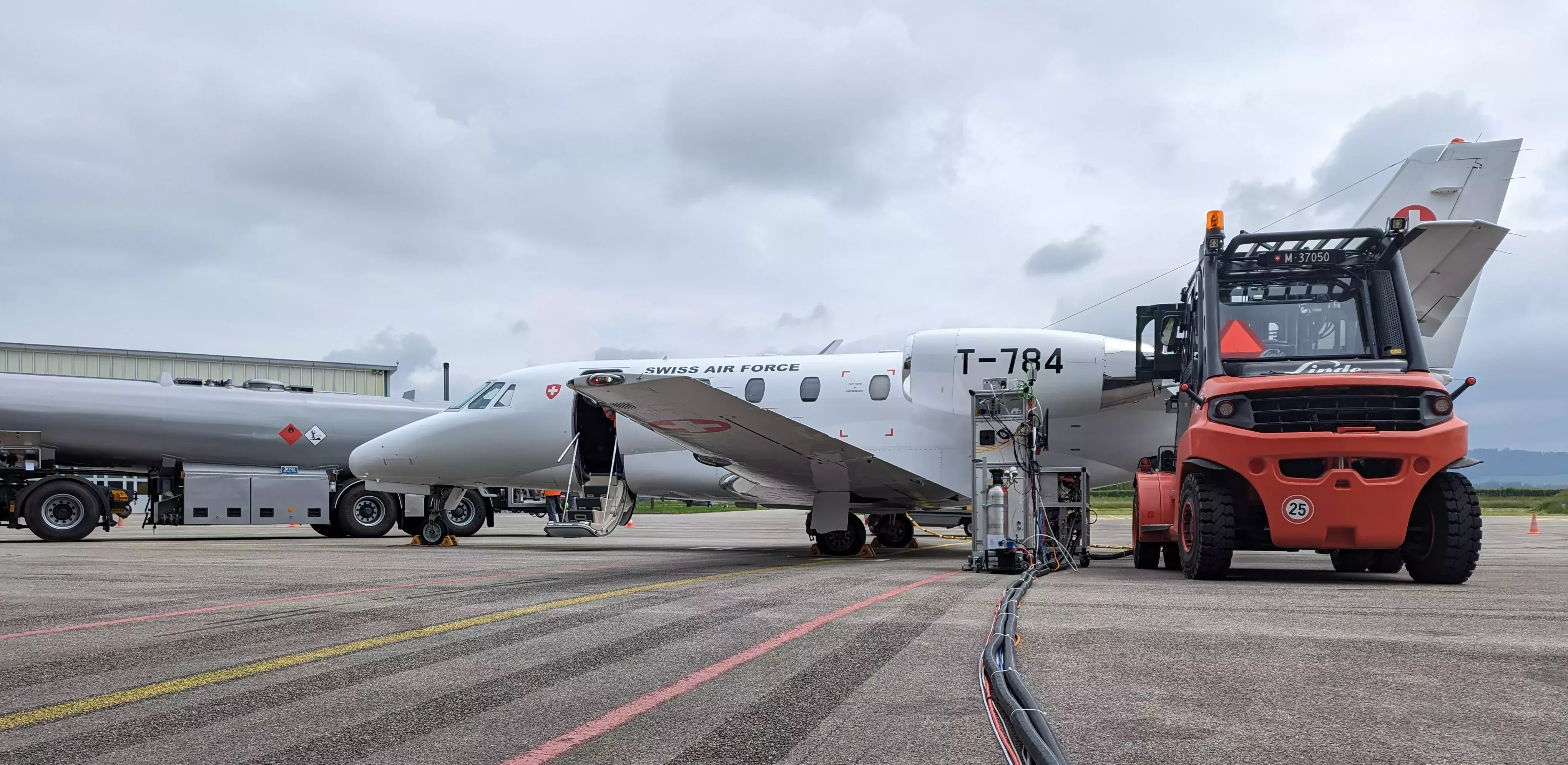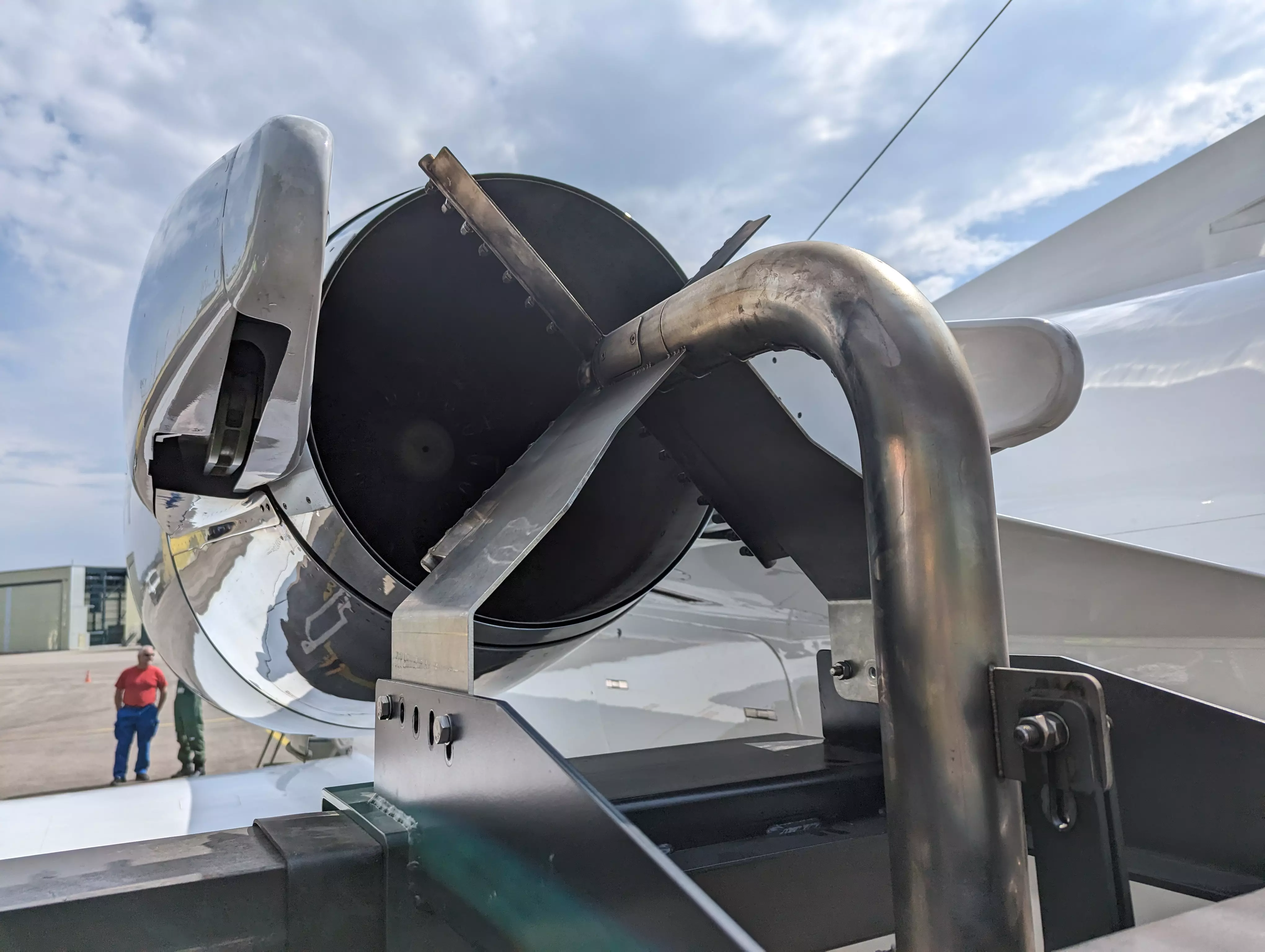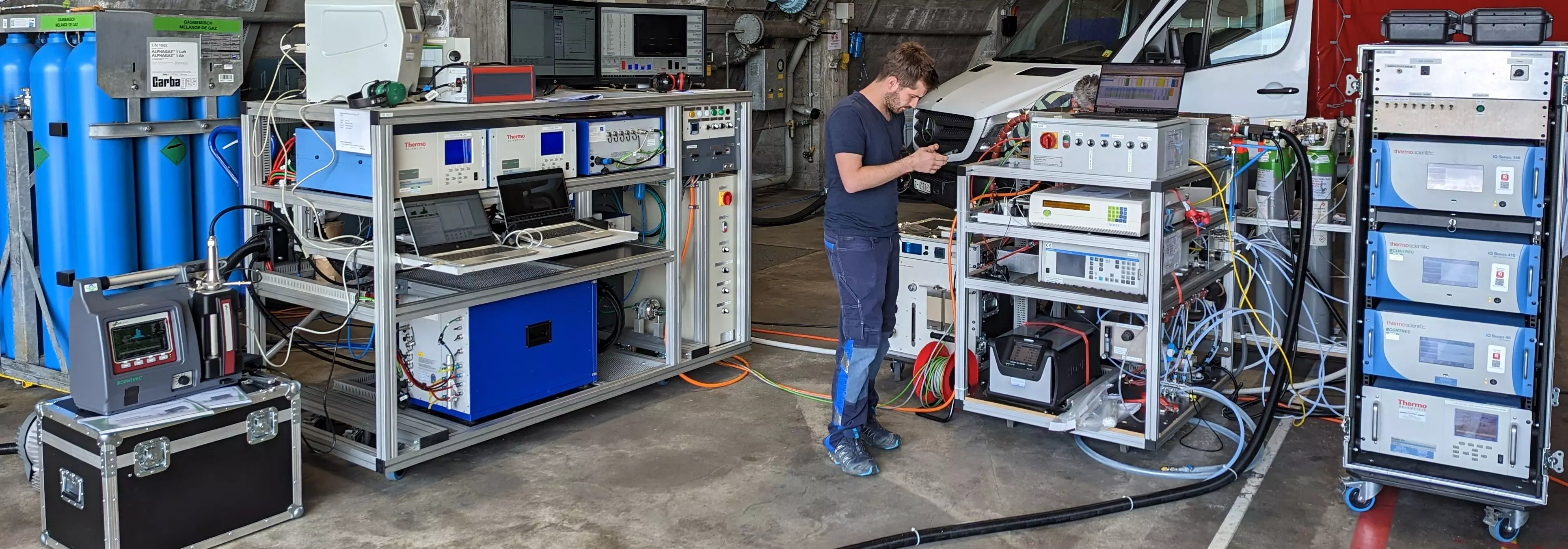ZHAW researchers put sustainable fuel to the test on a Federal Council jet
Working in collaboration with the Federal Office of Civil Aviation (FOCA), the Swiss Air Force and the Paul Scherrer Institute (PSI), researchers from the ZHAW Centre for Aviation measured the pollutant emissions of a Federal Council jet both when using conventional kerosene and a mixture with sustainable fuel as part of the AGEAIR II project. The objective was to allow for a comparison of the pollution levels.


In addition to the civil aviation sector, the fuel emissions of Switzerland’s military aircraft should also be reduced. To make this possible, sustainable fuel, for example HEFA fuel (hydroprocessed esters and fatty acids), is to be blended with conventional kerosene. HEFA fuel is produced from waste products including cooking oil and animal fats. By the end of the year, the Swiss Armed Forces plan to use a kerosene mix comprising two percent sustainable fuel. This target has been set against the backdrop of a European Union requirement to gradually increase the blending of sustainable fuels to a level of 70 percent by 2050.

In addition to reducing CO2 emissions, the use of sustainable fuel is expected to help reduce emissions of harmful particulate manner, including soot particles. To this end, researchers conducted emission measurements at the military airport in Payerne on one of the Federal Council’s jet, a 20-year-old Cessna 560 XL Citation Excel, under the leadership of the FOCA. The team led by the ZHAW researchers Lukas Durdina and Julien Anet was in charge of planning the tests and analysing the results. “For the measurements, we used our SMARTEMIS mobile measurement system, while the exhaust probe was provided by the FOCA and the Swiss Air Force supplied the fuel and the jet,” explains Lukas Durdina, who researches aircraft engine emissions at the ZAV. At the beginning of the series of tests, the ZHAW team conducted measurements with conventional fuel in collaboration with employees from the Paul Scherrer Institute (PSI). On the second day, they then blended the conventional fuel with 30 percent HEFA fuel.
Surprising results
The preliminary measurement results have, however, come as a bit of a surprise to the ZHAW team. “The addition of 30 percent HEFA fuel led to a much lower reduction in particulate matter emissions than expected, with emissions only being around 20 percent lower than with conventional fuel,” says Lukas Durdina. In comparable tests with larger machines, the reduction in particulate matter emissions was markedly greater. The exact reasons for this still have to be investigated. As part of a follow-up project, further measurements with the same jet are planned. “This time, however, under different climatic conditions and with different fuel mixtures,” explains ZHAW researcher Lukas Durdina.